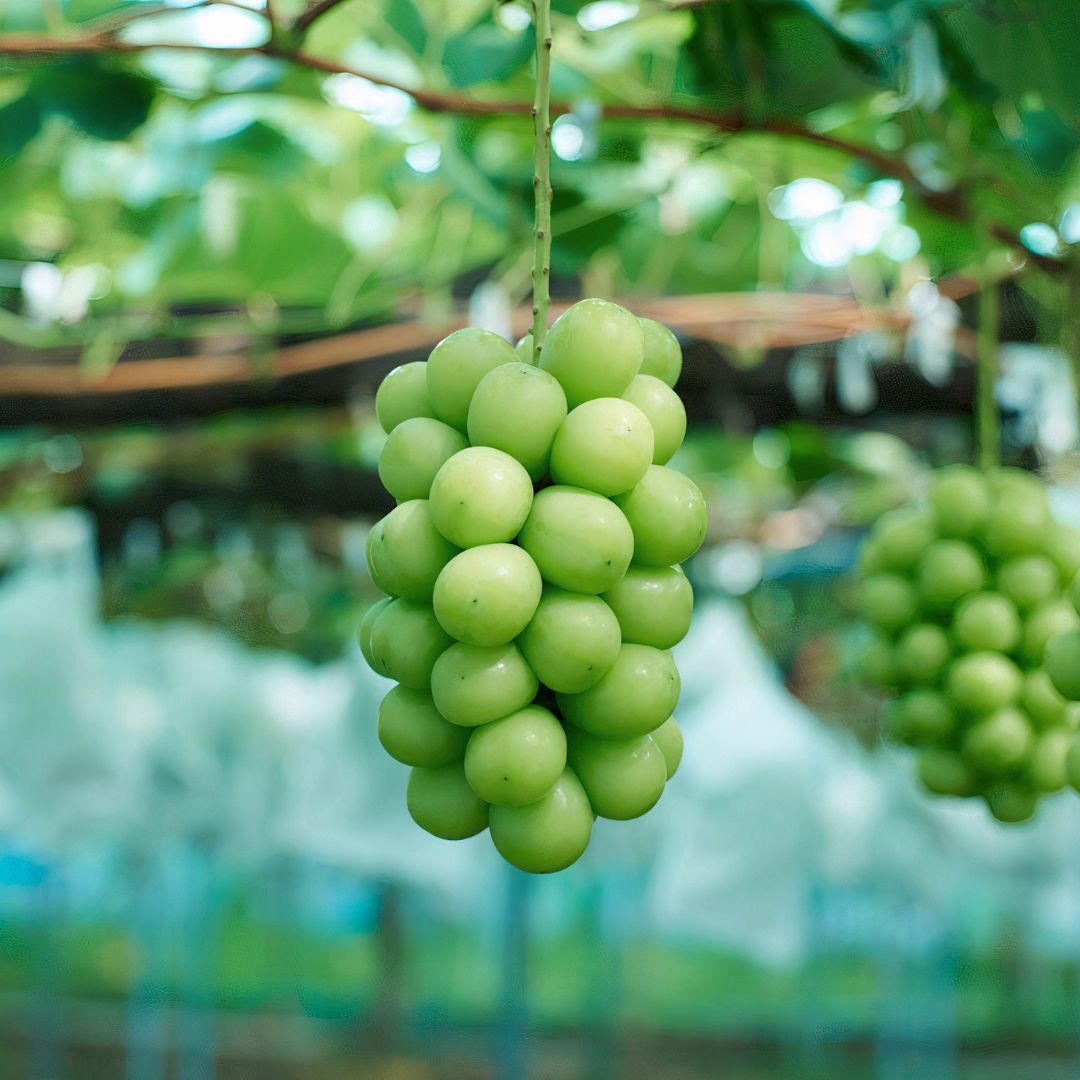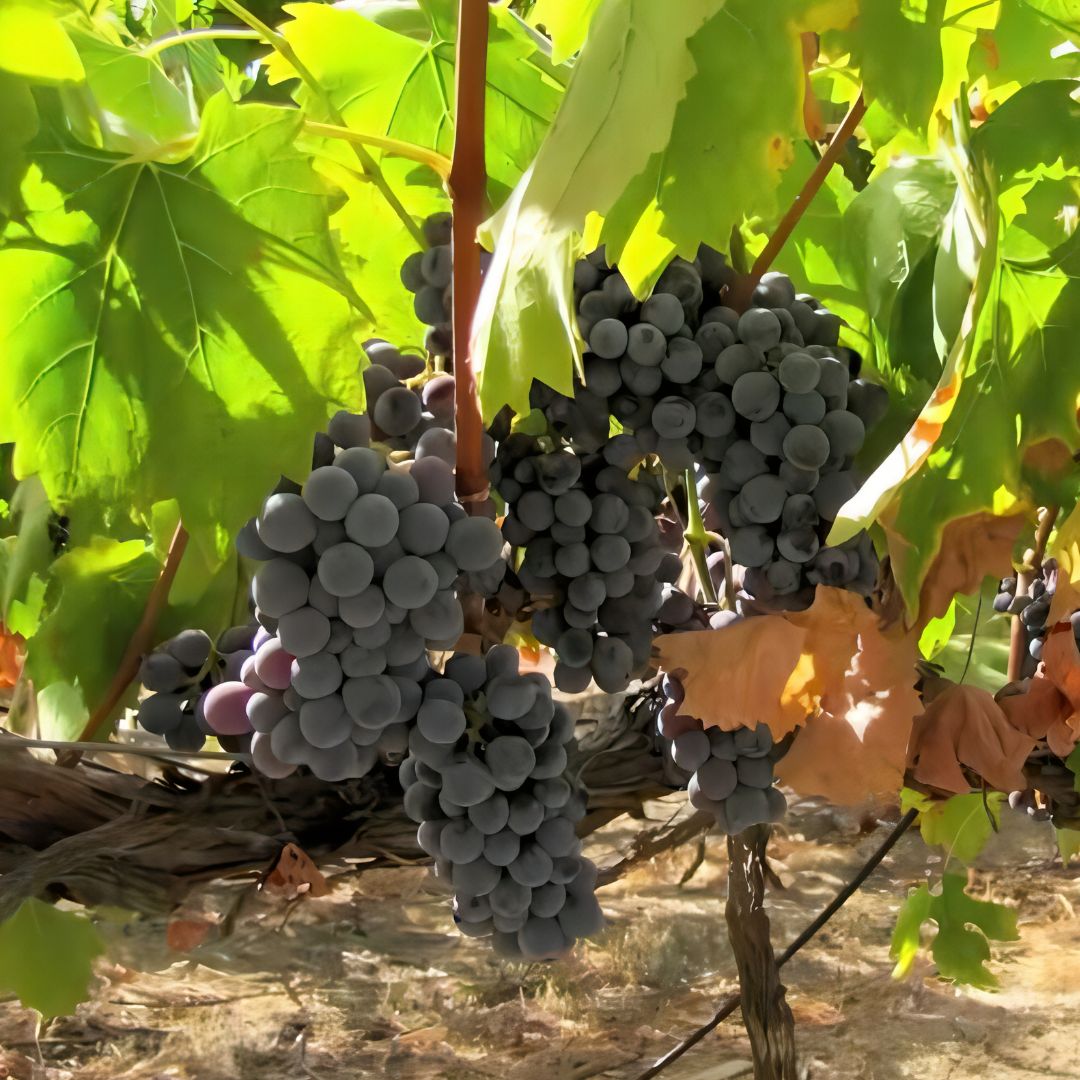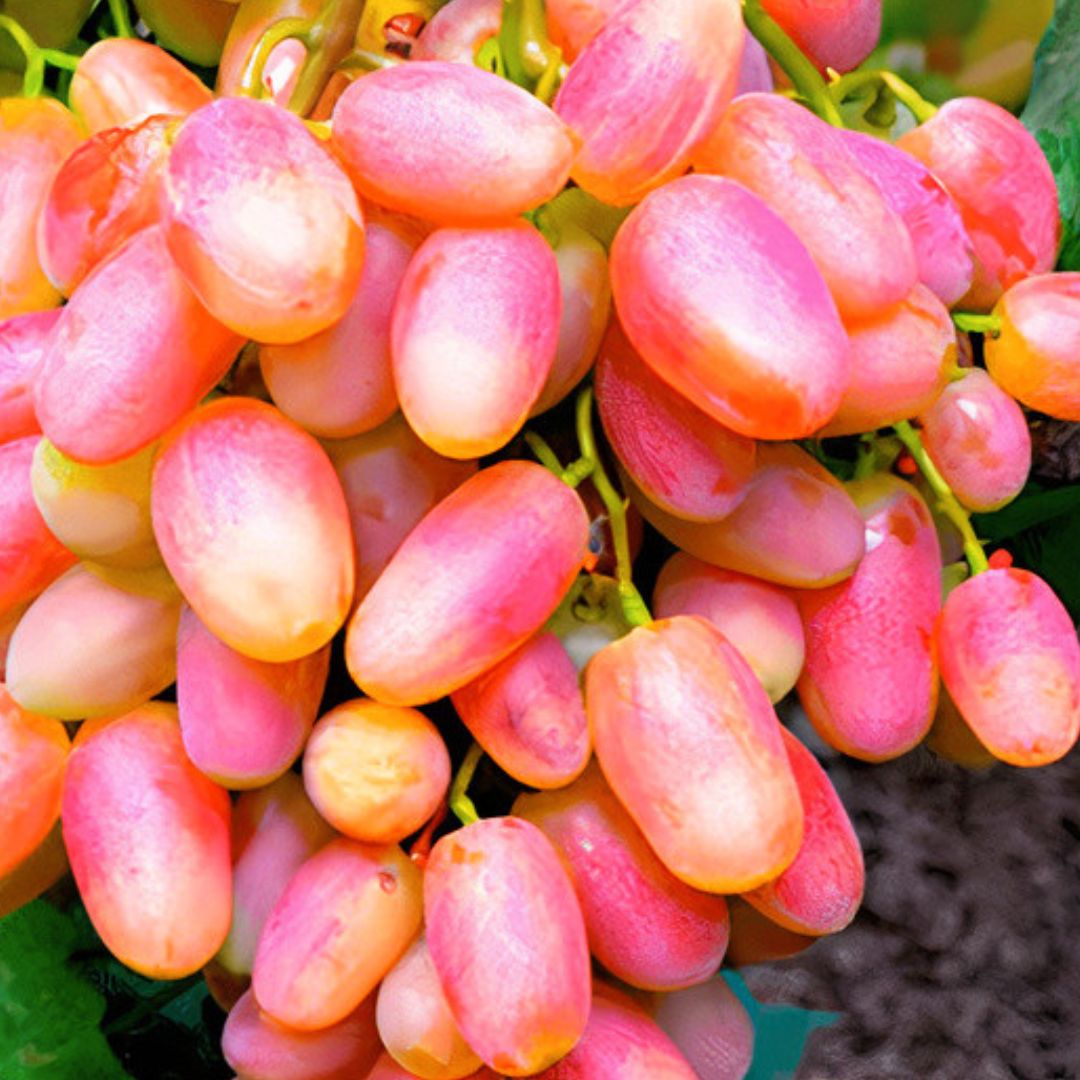
Shine Muscat is a table grape cultivar primarily developed for its unique taste profile and appealing appearance. It was created in Japan in 1988 as a result of crossbreeding Akitsu-21 and ‘Hakunan’ (V. vinifera) varieties.
History
Shine Muscat was bred by the National Institute of Fruit Tree Science (NIFTS) in Japan. It underwent nationwide strain adaptability tests between 1999 and 2002, initially named “Grape Akitsu No. 23.” Finally, it was formally registered on September 5, 2003, carrying the nomenclature registration number “Grape Agriculture and Forestry No. 21”
Characteristics
Appearance: The Shanghai Muscat grapes are yellowish-green and have a short, oval shape. Each grape weighs between 11 and 12 grams – about the same size as the Kyoho grape.
Taste: These grapes have a high sugar content of about 20 degrees and a low acidity of 0.3 to 0.4 g/100 mL. They have a crisp flesh texture and distinct muscat flavor.
Growth: The clusters of grapes are cylindrical and can weigh between 400 and 500 grams. The grapevines are relatively cold-resistant and can maintain their fruit’s color even in extremely hot summers.
Plant Morphology: Shine Muscat grape leaves are green and wavy when mature, appearing densely covered with flat-lying hairs on the underside.
Cultivation: The grapevines are vigorous and can produce their first harvest three years after planting. Gibberellin, a plant growth hormone, is often used to achieve seedlessness and increase fruit size.



